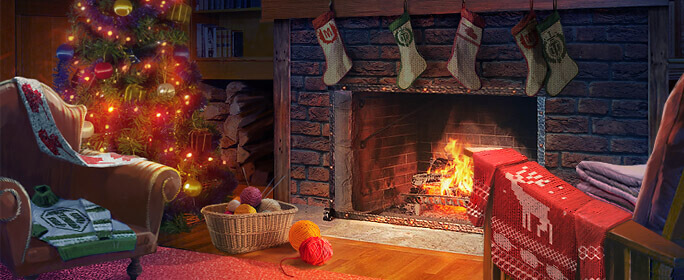Hello everyone,
just a random thing I ran into on RU forums – a comparison of how Christmas banners look on various servers…
Russians have the usual Ded Moroz (Grandfather Frost). It’s a Russian things, although other orthodox countries have that too.
Strangely enough, EU server has Ded Moroz too… beats Santa I guess.
US server has Santa
Korea has re-colored Ded Moroz for some reason
ASIA has a hearth with a “deer” sweater and socks (odd, I’d expect deers to be present on RU server…)
Chinese server has ads for STA-2 and ISU-130, which you can buy there…






the anti mainstream asia server,, lovely but still,, filled with scumbag
Lovely Pay to Win server
indeed
ASIA is different from Chinese server, dude.
more like “Free kill using Gold on tier 10″
It’s a Reindeer – you know, pulls Santa’s sleigh etc?
I think it is as much or more a festive thing as the ‘deer = noob’ thing.
At least in the UK, reindeer are a big thing at Christmas
that could explain the recent “Red” spam on MM in these 4 days
Blue Santa has better stats than Red Santa – thats why its on EU.
thats racist!
I dont even have a car – how the fuck you think I can race?
In a shopping trolly going downhill? C’mon Woras. I”ll race you to the crossing. Whoever crashes into that red coca-cola truck first wins. XD
Lel
Id pay for tickets to that.
And yeah, asia server sucks, Confermed.
u can definitely say it sucks from seeing the amount of e 25′s or just premium tanks in general, the amount of sealclubbers, and they lag/ping problem with people playing from Australia, like myself, with people all the way from Japan.
Deal!
BAHAHAHAHAA Woras greatest Woras comback of the year.. Spit out my coffee..lol
So funny.
Much humor.
How long take time to next G.E.R.?, Woras?
Or that is ended?
Its 11mins done. Probably this week.
That’s neither Ded Moroz nor Santa. Saint Nikolas is the name.
A little explanation to what Ded Moroz is. It is translated as Old man frost. it is a common theme from old eastern-slavic folktales. The tale of him is pre-christian. Funny thing is that originally Old man frost was a evil character who frosted people and kidnapped them for ransom. Their relatives where supposed to pay ransom by giving presents to him XD
http://en.wikipedia.org/wiki/Ded_Moroz
the entire xmas thing bs has nothing to do with christianity bs
Wow, just asked my wife who it was in her home, Santa Claus or Ded moroz in Ukraine. She said both XD. Santa Claus came on 6-th December to give presents and Ded Moroz for new years eve.
Slavic countries unite! :)
@thunderchase
I specifically wrote eastern-slavic folklore. :-) Ded moroz was not present in the western-slavic culture.
Well, I’m from Serbia, which makes me south-slavic origin, we have “Deda Mraz” here which comes for New Year. :)
And Santa is Coca-cola trademark…And everyone seams to forget that thing…That man in red suit and white beard is invention of coca-cola….That is all i have to say about that…
“That man in red suit and white beard is invention of coca-cola”
No, you are wrong. That is a myth. The Santa Claus in red suite pre-dates Coca-Cola adverts with him.
yeh it was a pagan holiday based around the winter solstice in western European countries , just got over written by the church, to quote the bible quite ironically ” there is nothing new under the sun”
Yeah, many “pagan” holidays got over written by christianity. Simple yet effective measure to erase their pre-christian cultural heritage.
That’s a myth. Christmas was first celebrated around 6th century in Rome, with the date of 25th of December being set exactly nine months after the celebration of Annunciation of Mary, because babies apparently. While some of the customs may have been influenced by the roman Saturnalia, the winter solstice celebrations customarily fell around 21st-22nd of December, and the Saturnalia itself lasted for a week starting at the 17th, making it an indigenous Christian holiday.
Actually:
Millions of people worldwide celebrate Christmas for various reasons. Some enjoy festive times with friends and family. Others think about God or devote time to helping the poor or needy. By themselves, these are undoubtedly worthy deeds. However, they are clouded by the dark side of this holiday.
First, many celebrants believe that Christmas is a birthday celebration for Jesus. However, historians widely concur that the date of his birth is unknown. The Christian Book of Why notes that “the early Christians refused to set aside a date marking Jesus’ birth” because they wanted “to divorce themselves from all pagan practices.” Interestingly, the Bible gives no indication that Jesus ever celebrated his own birthday or anyone else’s. In contrast, he did command his followers to commemorate his death.—Luke 22:19.
What Does the Bible Say About Christmas?
The Bible’s answer
The Bible does not give the date of Jesus’ birth, nor does it say that we should celebrate his birthday. As McClintock and Strong’s Cyclopedia states: “The observance of Christmas is not of divine appointment, nor is it of NT [New Testament] origin.”
Instead, an examination of the history of Christmas exposes its roots in pagan religious rites. The Bible shows that we offend God if we try to worship him in a way that he does not approve of.—Exodus 32:5-7.
History of Christmas customs
Celebrating Jesus’ birthday: “The early Christians did not celebrate [Jesus’] birth because they considered the celebration of anyone’s birth to be a pagan custom.”—The World Book Encyclopedia.
December 25: There is no proof that Jesus was born on that date. Church leaders likely chose this date to coincide with pagan festivals held on or around the winter solstice.
Gift-giving, feasting, partying: The Encyclopedia Americana says: “Saturnalia, a Roman feast celebrated in mid-December, provided the model for many of the merry-making customs of Christmas. From this celebration, for example, were derived the elaborate feasting, the giving of gifts, and the burning of candles.” The Encyclopædia Britannica notes that “all work and business were suspended” during Saturnalia.
Christmas lights: According to The Encyclopedia of Religion, Europeans decorated their homes “with lights and evergreens of all kinds” to celebrate the winter solstice and to combat evil spirits.
Mistletoe, holly: “The Druids ascribed magical properties to the mistletoe in particular. The evergreen holly was worshiped as a promise of the sun’s return.”—The Encyclopedia Americana.
Christmas tree: “Tree worship, common among the pagan Europeans, survived after their conversion to Christianity.” One of the ways in which tree worship survived is in the custom of “placing a Yule tree at an entrance or inside the house in the midwinter holidays.”—Encyclopædia Britannica.
Second, many scholars agree that most Christmas traditions have their roots in non-Christian and pagan customs. These include Santa Claus, as well as using mistletoe and the Christmas tree, exchanging gifts, burning candles and Yule logs, hanging decorative wreaths, and caroling. Regarding some of these customs, the book The Externals of the Catholic Church observed: “When we give or receive Christmas gifts, and hang green wreaths in our homes and churches, how many of us know that we are probably observing pagan customs?”
“Church leaders likely chose this date to coincide with pagan festivals held on or around the winter solstice.” The date of 25th of december was not chosen by any ‘Church official’, and the celebration of Christmas on that day was initialy only limited to the Rome commune. It was also decried as ‘non-christian’ by many of the more orthodox bishops, of which historical records remained. The date is also significant. While there were no official records of the date of JFC’s birth, as I wrote, there was an established holiday of the Annunciation of Mary, viewed as the time of conception for the guy. That fell on the 25th of March, and if you add nine months to that (as I wrote, because babies), you come to the 25thof December. Moreover, it would seem logical that if you shamelessly overwrite a pagan celebration, you would want to use the same dates, but there has not been any other festivities on the 25th of December ever since the Bachanalia were outlawed four centuries prior. The listing of chosen Christmas customs with quotes from well established encyclopedia is a clever way to make the whole festivity sound like it’s pagan in origin, but it’s not. While I can not comment on christmas lights and mistletoe (partialy because I come from a part of the world where using that particular tree parasite fr festivities never took off), santa claus is just a warped variation of the celebration of st. Nicholas, falling on the 6th of December, with his outward appearance influenced by a 19th century poem (this may vary because of regional variations though), while the decorated christmas tree took off in 16th century Germany, which at this point had hardly any pagan rituals to steal. While I concur that some of the customs might have been influenced by a number of pre-christian beliefs (brought into the holiday by the converts themselves), stating outright that the whole holiday is just a big social experiment by ‘church leaders’ to subjugate pagan worshippers is at best a myth, at worst a conspiracy theory.
If parts of it are pagan the whole thing is. If parts of an Apple are rotten then the Apple is rotten. Sorry.. nothing against those that want to celebrate Xmas but let’s not pretend it is a bible based practice.
Where in the bible does it mention celebrating Jesus birth or the birthdays of the apostles? Jesus whole childhood then 3 and a half years of ministry and his parents nor the disciples ever celebrated Jesus or any of their own birthdays. And no instruction saying to celebrate his birth. But he told us to celebrate his death. In fact there are only 3 birth days celebrations mentioned in the bible and they are all pagan. Pharoah of Egypt’s and Herods being two of them both pagan kings. Because the celebration of birth days was also a pagan event.
That’s like saying because some of the words in the English language are Germanic, you’re basically speaking German.
And how does this make the whole christmas celebration a ‘pagan ritual overwritten by the church’ exactly? You’re grasping at straws here. At this point it’s up there with the argument that Christianity is politheistic because they venerate saints…
Nothing against anyone wanting to celebrate birthdays or Xmas or whatever celebrations their church came up with.. but again – let’s not pretend they are bible based.
Would you drink a glass of fresh water if I put just a little manure in it? How much manure in your clean drinking water is acceptable to you? Table spoon maybe 2? That is like following beliefs blindly that are grounded in and tainted by pagan origins and pagan worship.
So is christening of infants, fasting for 40 days prior to Easter and a ton of other traditions. That’s kind of the point of tradition, isn’t it.
And despite your colourful analogies, you still failed to provide any direct proof that christmas is just a renamed pagan holiday.
I am talking about this version of santa. This clothes, this look.. He didn’t look like this until coca-cola invented this type of santa…Google it up, look it up in history, u will see…
No. Coca Cola commercials only made that type of Santa very popular. Thats all. There were Santas in this kind of red-white robes before in US.
here you haveSanta drawing from 1902 – http://en.wikipedia.org/wiki/File:Santa1902PuckCover.jpg
Coca Cola commercials with Santa started in 1930′s
Nothing against anyone wanting to celebrate birthdays or Xmas or whatever celebrations their church came up with.. but again – let’s not pretend they are bible based.
Santa Claus is based on the real Saint Nicolas of Bari. A Greek Christian bishop that lived in the 4th century. He is reputed to gift gold coins in the shoes of children who had left them out to dry. He lived in what is today Turkey but his body was stolen and now is interred in Italy.
Santa Claus is thought to be a corruption of Sinterklass which itself is a corruption of Saint Nikolaos.
Now, the current version of the jolly old man dressed in red is indeed based on the Coca Cola advertisements but these are also based on the illustration of the poem “A visit from Saint Nicholas.”
@ soviet russia you give present to santa…
no In Soviet Russia you give present to KGB Head Putin
Ded Moroz Looks way better than Santa Claus
Agreed. Santa Claus looks like he is trying to sell Coca Cola. Ded Moroz looks badass, like he is planing to unleash the orks on Middle Earth.
gandalf would wreck him , no competition.
Well, Santa Claus, as we envision him today, actually was invented by Coca-Cola.
comment up there says NO to that Santa ala cocainum-cola myth
Not true,. This is urban myth. Read my previous post above and see drawing of Santa Claus made 30 years before start of Coca Cola Santa commercials.
Santa Claus looks ugly.
Of course US gets Cola Claus.
The American Santa Claus comes from the poem, “ ’Twas the Night Before Christmas” first published anonymously in 1823, and later attributed to Clement Clarke Moore.
Coca Cola was invented in Atlanta, Georgia (USA) by a pharmacist, Dr. John S. Pemberton, in 1886. The Coca‑Cola Santa Claus, created by artist Haddon Sundblom, was seen in advertisements beginning in 1931.
So you see boys and girls, Santa Claus’ “look” had been established 100 years prior to the Coca Cola Santa. At best, the Coca Cola Santa refined the look of what Americans already had fixed in their minds as Santa Claus.
I prefer general winter
Yeah, I saw snow once this winter :D
The Coca-Cola dwarf has nothing in common with Christianity.
First of all, the original Santes Nicolaus was a bishop of Myra, a paragon of charity. Always portrayed as tall, slender man (due to rigorously observed fasts); carrying the bishop’s staff and dressed in omophorion.
The second thing: St. Nicholas in no way is connected with Christmas. The Saint Nicholas day is either 6th or 19th December. The bizarre fairytale of elves, gifts etc. is just an example of succesful monetisation.
Well, isnt that how “traditions” are born?
Shoo, simpleton.
“TRADITIONS”….”ssss”.
& this man agrees with both of you.
http://tinyurl.com/p4nzhvg
Lets see how many ppl get the reference. :-)
UK National TV had a WOT advert on Xmas day- and so the PUSH begins
All Hail Santa Putin!
Putin’ Putin in Christmas :D
For a second there It looked like “Dedek Mraz” has 3 legs. Here we can choose between 3 people to bring us presents in december.
Merry Christmas everyone!
There’s a bunch of new premium british tanks in TANK INSPECTOR like Cromwell ,centurion,fv215b and more.Does anyone know whats that about???
Its for Korea server.
As Ded Moroz is blue, does that mean he’s a team killer?
heavens no, it means he’s almost purple, silly! :)
And Santa is Tomato,.. hell Yeah
none of those on EU forum, i see this:
http://cdn-frm-eu.wargaming.net/wot/eu/cache/header_packages/103_wot_eu_ny-bg.jpg